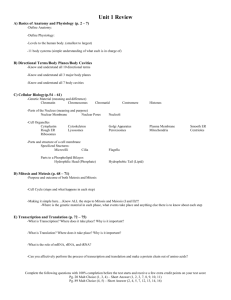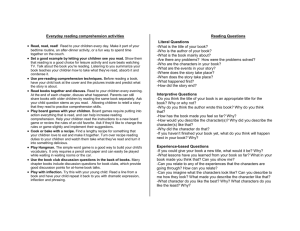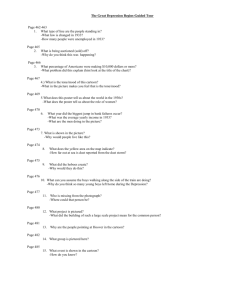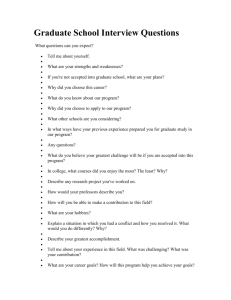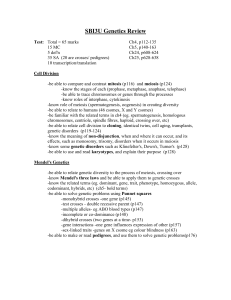Exam I Study Guide
advertisement
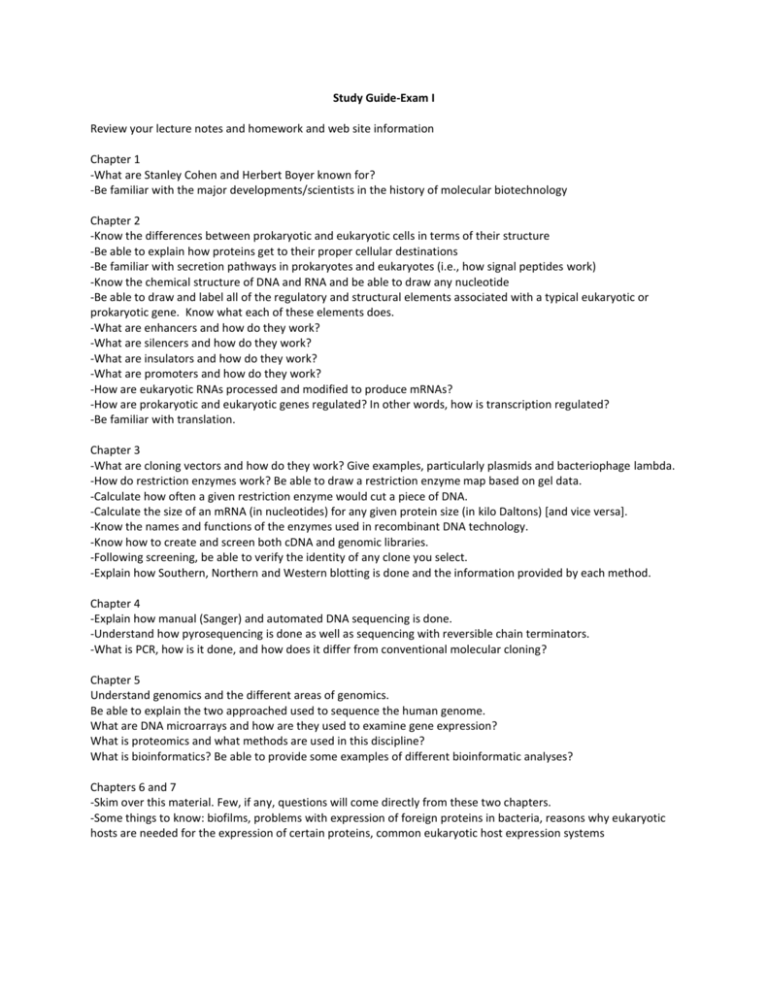
Study Guide-Exam I Review your lecture notes and homework and web site information Chapter 1 -What are Stanley Cohen and Herbert Boyer known for? -Be familiar with the major developments/scientists in the history of molecular biotechnology Chapter 2 -Know the differences between prokaryotic and eukaryotic cells in terms of their structure -Be able to explain how proteins get to their proper cellular destinations -Be familiar with secretion pathways in prokaryotes and eukaryotes (i.e., how signal peptides work) -Know the chemical structure of DNA and RNA and be able to draw any nucleotide -Be able to draw and label all of the regulatory and structural elements associated with a typical eukaryotic or prokaryotic gene. Know what each of these elements does. -What are enhancers and how do they work? -What are silencers and how do they work? -What are insulators and how do they work? -What are promoters and how do they work? -How are eukaryotic RNAs processed and modified to produce mRNAs? -How are prokaryotic and eukaryotic genes regulated? In other words, how is transcription regulated? -Be familiar with translation. Chapter 3 -What are cloning vectors and how do they work? Give examples, particularly plasmids and bacteriophage lambda. -How do restriction enzymes work? Be able to draw a restriction enzyme map based on gel data. -Calculate how often a given restriction enzyme would cut a piece of DNA. -Calculate the size of an mRNA (in nucleotides) for any given protein size (in kilo Daltons) [and vice versa]. -Know the names and functions of the enzymes used in recombinant DNA technology. -Know how to create and screen both cDNA and genomic libraries. -Following screening, be able to verify the identity of any clone you select. -Explain how Southern, Northern and Western blotting is done and the information provided by each method. Chapter 4 -Explain how manual (Sanger) and automated DNA sequencing is done. -Understand how pyrosequencing is done as well as sequencing with reversible chain terminators. -What is PCR, how is it done, and how does it differ from conventional molecular cloning? Chapter 5 Understand genomics and the different areas of genomics. Be able to explain the two approached used to sequence the human genome. What are DNA microarrays and how are they used to examine gene expression? What is proteomics and what methods are used in this discipline? What is bioinformatics? Be able to provide some examples of different bioinformatic analyses? Chapters 6 and 7 -Skim over this material. Few, if any, questions will come directly from these two chapters. -Some things to know: biofilms, problems with expression of foreign proteins in bacteria, reasons why eukaryotic hosts are needed for the expression of certain proteins, common eukaryotic host expression systems

